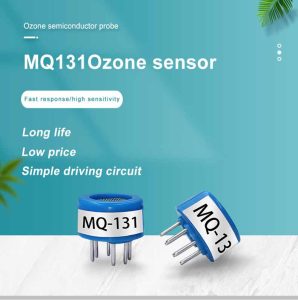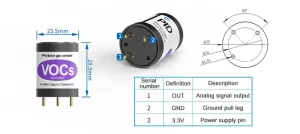Safeguarding public health is a critical concern for governments, organizations, and individuals worldwide. One of the most significant threats to public health is air pollution. According to the World Health Organization (WHO), outdoor air pollution causes 4.2 million premature deaths worldwide every year. This alarming statistic highlights the importance of monitoring and improving outdoor air quality. Gas sensors are one of the key tools in this effort, providing accurate and timely data on air quality and helping to safeguard public health.

Gas sensors are devices that detect and measure the concentration of various gases in the air. They are used in a wide range of applications, from industrial processes to medical diagnosis. In recent years, gas sensors have become increasingly important in monitoring outdoor air quality. They are used to detect pollutants such as nitrogen oxides, sulfur dioxide, carbon monoxide, and ozone, which are major contributors to air pollution and can have serious health effects.
Gas sensors are used in a variety of ways to monitor outdoor air quality. One common application is in air quality monitoring stations, which are set up in urban areas to measure the concentration of pollutants in the air. These stations use a network of gas sensors to collect data on air quality, which is then analyzed and used to develop strategies to improve air quality.
Another important use of gas sensors is in mobile air quality monitoring. This involves using portable gas sensors to measure air quality in different locations, providing a more detailed and accurate picture of air quality than stationary monitoring stations. Mobile air quality monitoring is particularly useful in identifying pollution hotspots, such as busy roads or industrial areas, where pollution levels can be much higher than the surrounding area.
Gas sensors are also used in personal air quality monitors, which are becoming increasingly popular among individuals concerned about their exposure to air pollution. These devices are worn on the body and provide real-time data on air quality, allowing individuals to make informed decisions about their activities and exposure to pollution.
The data collected by gas sensors is used in a variety of ways to improve outdoor air quality and safeguard public health. One important use is in developing air quality regulations and policies. Governments use data from gas sensors to set standards for acceptable levels of pollutants in the air, and to develop strategies to reduce pollution levels.
Gas sensors are also used in air pollution control systems, such as catalytic converters in cars and industrial emissions control systems. These systems use gas sensors to detect pollutants in the air and adjust their operation to reduce emissions and improve air quality.
In addition, gas sensors are used in emergency response situations, such as chemical spills or gas leaks. They provide real-time data on the concentration of pollutants in the air, allowing emergency responders to take appropriate action to protect public health and safety.

Overall, gas sensors play a critical role in safeguarding public health by providing accurate and timely data on outdoor air quality. They are used in a variety of applications, from stationary monitoring stations to personal air quality monitors, and are essential in developing regulations and policies to improve air quality. As air pollution continues to be a major threat to public health worldwide, the importance of gas sensors in monitoring and improving outdoor air quality cannot be overstated.
 : +86 155 8830 2704
: +86 155 8830 2704 : jxdziot@gmail.com
: jxdziot@gmail.com
